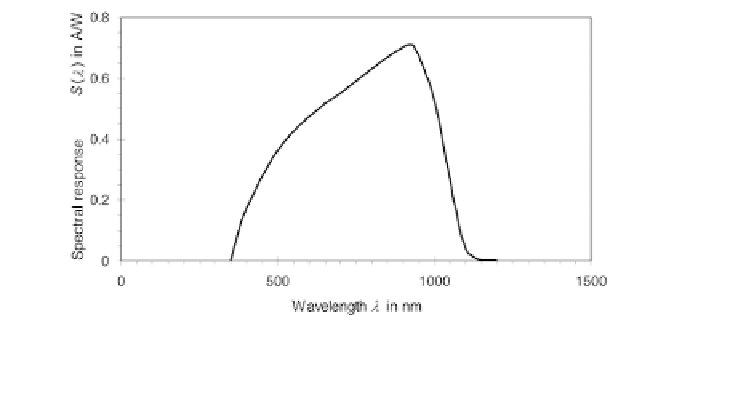Environmental Engineering Reference
In-Depth Information
Reflection
Front
contact
n-region
Charge
separation
Charge
separation
p-region
Recombination
Rear contact
Transmission
Figure 4.9
Processes in an Irradiated Solar Cell
(4.26)
The irradiance
E
absorbed by the semiconductor is a share of the incoming
irradiance
E
0
. It depends on the thickness
d
of the semiconductor and the
material-dependent
absorption coefficient
α
:
(4.27)
There are two types of semiconductor: direct and indirect. The absorption
coefficient of indirect semiconductors such as silicon is significantly lower for
higher wavelengths. For example, the direct semiconductor GaAs has an
absorption coefficient for light with a wavelength of about 1
µ
m of
α
(GaAs)
~
630 mm
-1
, whereas this value decreases to
(Si)
~
7.2 mm
-1
for silicon.
For both semiconductors to absorb the same amount of light, the silicon will
have to be 87.5 times thicker than a GaAs semiconductor. The wavelength
dependence of the absorption coefficients must be considered for an exact
calculation. Crystalline silicon solar cells should have a thickness of at least
α
Source:
Wagemann and Eschrich, 1994
Figure 4.10
Spectral Response of a Solar Cell




